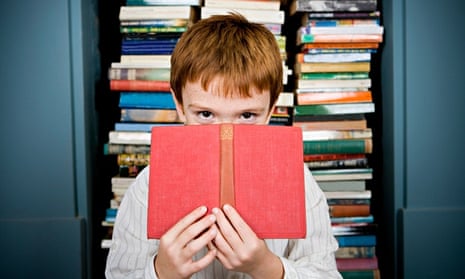Are children reading less – or more? I’m confused. If less, then what happened to the 854,262 copies of John Green’s The Fault in Our Stars that were snapped up last year in the UK, according to Nielsen BookScan, or the 481,662 copies of David Walliams’s Awful Auntie? If more, then what’s with all the doom-mongering?
A mischievous friend of mine once hatched a theory about Jeffrey Archer’s sales figures which could only be proved by the discovery in years to come of millions of copies of Cain and Abel mouldering away in remote warehouses. Clearly, for Messrs Green and Walliams, one would have to come up with a different scenario – cobwebbed towers of virgin ‘Aunties glaring balefully from the back of toy cupboards across the land, perhaps?
The paradox remains. One day we’re warned about a sharp decline in children’s reading for pleasure. Four days later it’s reported that a 9% rise in sales of children’s books is the one bright light in a dismal year for publishing. Admittedly the reading for pleasure report comes from the US, but it mirrors years of jeremiads on this side of the Atlantic.
So what is going on? It’s likely that, as a YA weepie, John Green’s sales have hitched a lift on the reading habits of the twentysomethings who grew up with Harry Potter and so know how bewitching a children’s book can be. According to novelist Meg Rosoff, speaking at the first YA Literary Convention last summer, 55% of YA titles are in fact bought by adults.
But Awful Auntie is precision-engineered for the eight to 12-year-olds at whom it’s aimed, and it’s hard to imagine Aunt Alberta becoming a hit with readers much older. According to the latest figures from the Office for National Statistics just under 800,000 children a year are born in the UK, which puts the sales figures in a dizzying perspective: if the age range for reading David Walliams is about four years, then one copy of that single book is sold for every seven children in the age group. So much for the non-reading nation.
This Panglossian view is backed up by research from the National Literacy Trust last summer, which revealed that 53.3% of young people enjoy reading either “very much” or “quite a lot” – up from 51.4% in 2005.
But obviously, number-crunching can only take you so far. Philip Jones, editor of trade journal the Bookseller suggests that the sales boom in children’s books could be due to canny booksellers displaying them more prominently: “If commercial fiction is going to digital, booksellers will put lots of children’s books out there, because parents are still buying children’s books in print.”
Ah parents, such contradictory beings – so neglectful of their own bookshelves, and so ambitious for their children’s. A key part of the puzzle is the ratio of Awful Aunties bought to children who own a copy or, more interesting still, have actually read it. If only this could be calculated. With a colleague reporting that her daughter received three copies for Christmas, I’d imagine the results would be interesting.

Comments (…)
Sign in or create your Guardian account to join the discussion